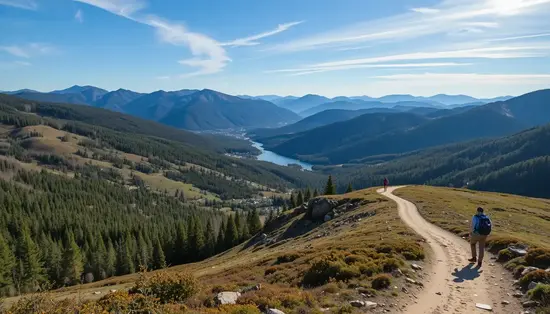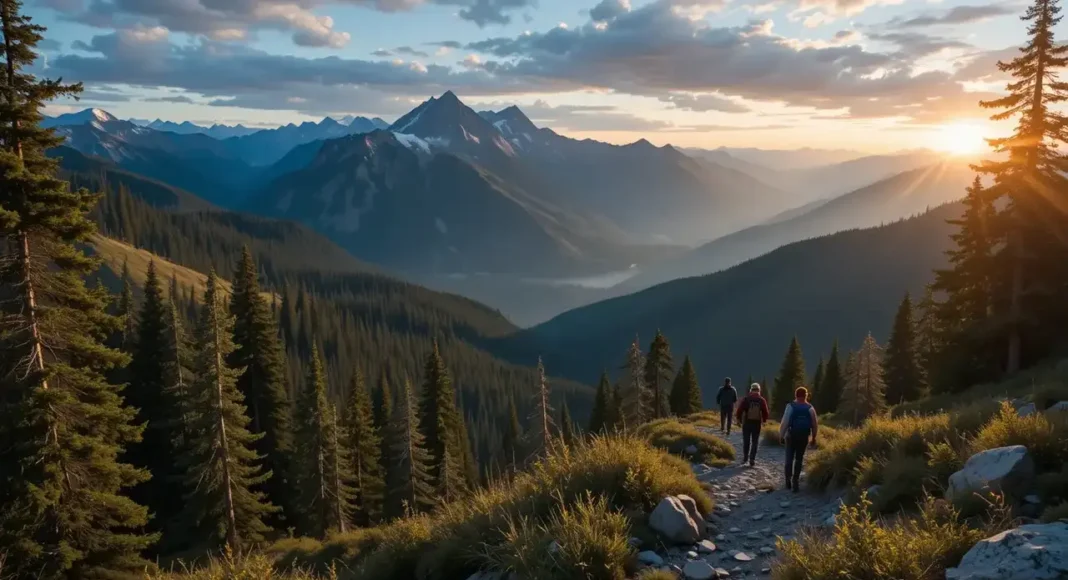The United States is home to an expansive network of awe-inspiring long-distance paths, and among them the 11 National Scenic Trails stand out for their unmatched blend of wilderness, recreation, and heritag e.
These trails traverse majestic landscapes, cross state lines, and provide outdoor enthusiasts with opportunities for adventure, reflection, and connection to nature.
In this guide, we take you through the definition, history, top trails, planning tips, and what makes these corridors so exceptional.
Contents
What Are the National Scenic Trails?
The 11 National Scenic Trails are formally designated by an Act of Congress under the National Trails System Act and are long-distance routes (typically over a hundred miles) officially recognized to provide recreation, conservation, and the enjoyment of nationally significant scenic, natural, historic, or cultural qualities.
These trails are land-based and create a continuous recreational corridor, connecting diverse ecosystems and inviting hikers, backpackers, and multi-use explorers to journey through parts of America that range from remote wilderness to accessible day-hikes near cities.
A Brief History of the Program
The concept of a national trail network emerged in the mid-20th century and was codified in 1968 via the National Trails System Act.
The first National Scenic Trails designated, such as the Appalachian National Scenic Trail and the Pacific Crest National Scenic Trail, became benchmarks for modern long-distance hiking in the U.S.
Over decades, Congress has added more trails, and today there are eleven recognized National Scenic Trails.
In recent years, several of these trails also gained recognition as units of the National Park Service, highlighting their dual roles of recreation and preservation.
Why Explore These Trails?
Unrivaled Scenic Diversity
From Atlantic ridgelines to glacial-carved hills, desert canyons to sandy coastlines, the National Scenic Trails cover a stunning variety of terrain.
For example, the Appalachian Trail (A.T.) winds from Georgia to Maine across ridges, forests and valleys, while the Ice Age National Scenic Trail in Wisconsin follows glacial features such as kettles and eskers—a landscape forged by the last Ice Age.
Recreation and Escape
Whether you’re planning a multi-week thru-hike or a weekend section hike, these trails offer flexible use. You can hike, backpack, take in nature, or simply stroll a scenic portion near your home.
Conservation and Connection
These trails play an important role in preserving natural corridors, cultural heritage, and provide access to wild places for generations to come.
The 11 National Scenic Trails list
Here are the designated routes you’ll want to know about:
- Appalachian National Scenic Trail (A.T.) — approximately 2,190 miles, running through 14 states from Georgia to Maine.
- Pacific Crest National Scenic Trail (P.C.T.) — roughly 2,650 miles, spanning California, Oregon, and Washington.
- Continental Divide National Scenic Trail (C.D.T.) — about 3,100 miles, traversing Montana, Idaho, Wyoming, Colorado, and New Mexico.
- North Country National Scenic Trail — approximately 4,600 miles (when complete) across eight states from North Dakota to Vermont.
- Ice Age National Scenic Trail — near 1,000–1,200 miles in Wisconsin, tracing glacial terrain.
- Potomac Heritage National Scenic Trail — around 710 miles in the mid-Atlantic region (DC, Maryland, Virginia, Pennsylvania).
- Natchez Trace National Scenic Trail — segments in Tennessee, Mississippi and Alabama, following historic pathways.
- Florida National Scenic Trail — about 1,300 miles in Florida, from the Gulf Islands to Big Cypress.
- Arizona National Scenic Trail — roughly 800 miles traversing Arizona from Mexico to Utah borders.
- New England National Scenic Trail — about 215 miles in Connecticut and Massachusetts through classic New England landscapes.
- Pacific Northwest National Scenic Trail — roughly 1,200 miles through Idaho, Montana and Washington.
These trails vary dramatically in length, terrain, difficulty, access, and maintenance status—making them suitable for all kinds of adventurers, from casual day-hikers to hardened thru-hikers.
Planning Your Journey: Key Considerations
Choosing the Right Trail and Section
You don’t have to hike the full length of a trail to enjoy it. Many visitors choose section hikes or short day trips on accessible parts of these long routes.
If you live in the mid-Atlantic region, explore the Potomac Heritage Trail for a few days. On the West Coast, try a 20-mile stretch of the Pacific Crest Trail for a taste of its scenic beauty.
Season, Terrain & Permits
Seasonal factors like snow, heat, or storms, along with terrain difficulty, vary from trail to trail. Some areas have steep climbs or remote wilderness that require extra preparation.
Always check with managing agencies such as the National Park Service or U.S. Forest Service for the latest updates on trail conditions, rules, and permits.
Logistics & Resupply
Longer treks need careful planning. Prepare for food resupply, gear, water sources, and emergency communication before setting out.
Use reliable maps, guidebooks, and local trail associations for guidance. Many trails are rugged and isolated, so readiness is essential.
Leave No Trace & Trail Stewardship
These trails pass through fragile natural and cultural areas. Follow Leave No Trace principles to protect the environment.
Support local trail maintenance programs whenever possible. Responsible stewardship ensures these routes remain open and beautiful for future adventurers.
Highlighting Three Signature National Scenic Trails
1. Appalachian National Scenic Trail (A.T.)

Stretching from Georgia to Maine, the Appalachian Trail crosses ridges, valleys, and forests. With over 2,190 miles of wild beauty, it’s one of the most iconic hiking routes in the U.S.
2. Pacific Crest National Scenic Trail (P.C.T.)

The P.C.T. spans about 2,650 miles from California to Washington, cutting through the Sierra Nevada and Cascade ranges. It’s a symbol of adventure, known for its varied landscapes and challenge.
3. North Country National Scenic Trail (N.C.T.)

When complete, the N.C.T. will reach 4,600 miles, making it the longest of all National Scenic Trails. It passes through eight northern states, offering forests, lakeshores, and vast wilderness terrain.
Tips to Maximize Your Experience
- Plan early: For popular trail sections or through-hikes, permits, seasonal access windows, and local lodging get booked early.
- Break it into pieces: You don’t have to hike the whole trail at once—even a 2-5 day segment can deliver amazing scenery and renewal.
- Connect with local trail associations: Organizations tied to each trail often provide maps, route updates, and volunteer opportunities.
- Be aware of conditions: Weather, wildfire, trail damage or reroutes can affect availability and safety; always verify current info before you go.
- Embrace the whole context: These trails are more than just hiking paths—they link wildlife habitat, cultural heritage, scenic landscapes, and communities. A deeper awareness enriches the experience.
Conclusion
The 11 National Scenic Trails of the United States represent a bold vision of outdoor recreation anchored in conservation, access and adventure.
Whether you’re aiming for a single afternoon walk on a historic segment or planning to tackle a weeks-long expedition, these corridors reward the curious and the committed alike.
Embark on one of these trails with purpose, awareness and respect for the landscapes you traverse. You won’t simply hike through nature—you’ll engage with a living network of national significance.


